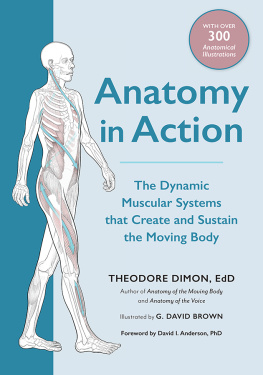Blandine Calais-Germain - Anatomy of Voice: How to Enhance and Project Your Best Voice
Here you can read online Blandine Calais-Germain - Anatomy of Voice: How to Enhance and Project Your Best Voice full text of the book (entire story) in english for free. Download pdf and epub, get meaning, cover and reviews about this ebook. year: 2016, publisher: Healing Arts Press, genre: Detective and thriller. Description of the work, (preface) as well as reviews are available. Best literature library LitArk.com created for fans of good reading and offers a wide selection of genres:
Romance novel
Science fiction
Adventure
Detective
Science
History
Home and family
Prose
Art
Politics
Computer
Non-fiction
Religion
Business
Children
Humor
Choose a favorite category and find really read worthwhile books. Enjoy immersion in the world of imagination, feel the emotions of the characters or learn something new for yourself, make an fascinating discovery.
- Book:Anatomy of Voice: How to Enhance and Project Your Best Voice
- Author:
- Publisher:Healing Arts Press
- Genre:
- Year:2016
- Rating:5 / 5
- Favourites:Add to favourites
- Your mark:
Anatomy of Voice: How to Enhance and Project Your Best Voice: summary, description and annotation
We offer to read an annotation, description, summary or preface (depends on what the author of the book "Anatomy of Voice: How to Enhance and Project Your Best Voice" wrote himself). If you haven't found the necessary information about the book — write in the comments, we will try to find it.
Explores the structures of the vocal tract and their functional relationships to the entire musculoskeletal system with detailed drawings
Examines the components of the larynx and pharynx, the effects of muscular tensions on the vocal cords, the importance of skeletal alignment, and the complex roles of the diaphragm, soft palate, lips, and tongue in vocalization
Provides exercises and techniques for increased air flow, correct posture, proper tongue position, jaw relaxation, and toning of the soft palate to improve the voice
When we use the voice, we involve the entire body. Our internal balance, muscular tone, skeletal alignments, soft tissue flexibility, and even our eye movements are reflected in the voice we project to our audience, whether one person or thousands.
Using the signature anatomical style of Blandine Calais-Germains groundbreaking bookAnatomy of Movement, this illustrated guide presents a dynamic, integrated study of the physical structures of the vocal tract and their functional relationships to the entire musculoskeletal system. From the individual bones and muscles of the head and neck to the intricate structure of the shoulders to the abdominal muscles and pelvis, the authors explain how each part of the body moves, flexes, vibrates, and supports the creation and individualization of the voice.
With detailed drawings and clear, concise text, they examine the individual components of the larynx and pharynx, the effects of muscular tensions on the vocal cords, proper alignment of the skull, rib cage, and pelvis, the intimate relationship between breath and voice, and the complex roles of the diaphragm, soft palate, lips, and tongue in vocalization. They provide simple exercises and techniques for increasing air flow and force, correct posture, proper positioning of the tongue, relaxation of the jaw, and toning of the soft palate.
Whether singer, teacher, actor, lawyer, politician, or workshop leader, this book reveals how understanding your vocal anatomy enables you to express your best voice.
Blandine Calais-Germain: author's other books
Who wrote Anatomy of Voice: How to Enhance and Project Your Best Voice? Find out the surname, the name of the author of the book and a list of all author's works by series.















